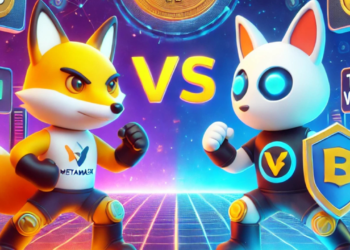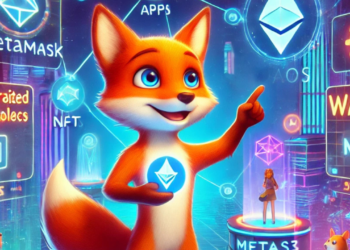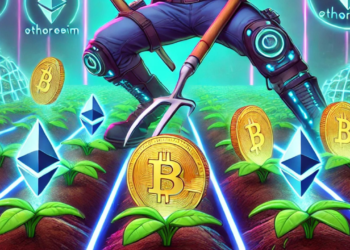As blockchain technology matures, the lines between traditional finance and decentralized finance (DeFi) are beginning to blur. One of the most exciting developments in this intersection is the rise of Real World Assets (RWAs) on the blockchain. In simple terms, RWAs refer to tangible, off-chain assets that are brought onto a blockchain and represented as digital tokens. Think real estate, government bonds, invoices, precious metals, or even artwork—all of these can be tokenized.
In this in-depth guide, we’ll explore what RWAs are, how they work, their advantages, challenges, and how you can get involved using trusted platforms like Bybit, MEXC, and secure hardware wallets like the Trezor Model T or Ledger.
🔍 What Are Real World Assets (RWAs)?
RWAs are physical or traditional financial assets that are digitized and represented on a blockchain in the form of tokens. These tokens are backed by the real asset, meaning they derive their value from something tangible in the real world.
Examples of RWAs include:
- Real estate (tokenized property ownership)
- Commodities (like gold or oil)
- Government and corporate bonds
- Treasury bills
- Invoices and debt instruments
- Luxury goods or collectibles
RWAs bridge the gap between traditional finance (TradFi) and decentralized finance (DeFi), enabling real-world value to move seamlessly within crypto ecosystems.
🛠️ How RWAs Work
The process of bringing real-world assets on-chain typically involves three main steps:
- Tokenization – A real-world asset is represented as a digital token on a blockchain, usually in the form of an ERC-20 or similar token.
- Legal Custody or Trust – A licensed custodian or legal entity holds the physical asset, ensuring it exists and is legally bound to the token.
- Issuance & Trading – The token can then be traded on DeFi platforms or specialized marketplaces, allowing global investors to access assets once limited to local markets.
🧠 Why RWAs Matter in Crypto
RWAs are important for several reasons:
- Liquidity: Assets that are traditionally illiquid (like real estate or fine art) become more accessible and tradable.
- Accessibility: Fractional ownership allows small investors to gain exposure to high-value assets.
- Transparency: Blockchain records provide an immutable ledger of transactions.
- Efficiency: Faster settlement, fewer intermediaries, and lower costs.
- Yield Opportunities: RWAs offer DeFi users access to yields from the real economy (e.g., T-bills yielding 5%+).
🌍 Popular Real World Asset Projects
Several crypto projects are pioneering the RWA movement:
- Ondo Finance – Offers tokenized U.S. Treasuries via its OUSG token.
- Centrifuge – Provides financing for small businesses via tokenized invoices.
- Maple Finance – Brings institutional credit on-chain.
- Goldfinch – Enables uncollateralized lending to real-world businesses.
- Matrixdock – Issues tokenized short-term treasury products.
These projects often operate on Ethereum and Layer 2s, leveraging smart contracts to automate compliance and payouts.
💸 How You Can Invest in RWAs
1. Via Centralized Exchanges
Some RWA tokens are available on reputable exchanges like:
- Bybit: Offers innovative tokens and exposure to DeFi assets.
- MEXC: Supports various DeFi and RWA projects with deep liquidity.
2. Through DeFi Protocols
You can participate by:
- Buying RWA tokens on DEXs like Uniswap or Curve
- Providing liquidity in RWA-focused pools
- Staking governance tokens of RWA projects
3. Using Tokenized Real Estate Platforms
Platforms like RealT or Propy allow users to buy shares of real properties on-chain.
🔐 Secure Your RWA Investments
If you’re investing in RWAs via tokenized assets, it’s crucial to store your tokens securely:
✅ Use a Hardware Wallet
Storing tokens representing RWAs on a hardware wallet like the Trezor Model T or Ledger Nano X adds maximum security.
Why?
- Offline storage = immune to online attacks
- You retain full custody of your RWA tokens
- Added layers of security (PIN, passphrase, physical confirmation)
✅ Back Up Your Recovery Phrase
Never store your seed phrase online. Use fireproof backup tools and keep them in a secure place.
✅ Verify Contracts & Tokens
Only interact with official token contracts. Double-check URLs, contract addresses, and metadata on Etherscan or similar explorers.
🧱 Challenges and Risks of RWAs
Despite the benefits, RWAs are not without challenges:
1. Legal Complexity
Ownership laws differ per country. Ensuring legal enforceability of tokenized assets is complex.
2. Centralization Risks
RWA projects often require off-chain custodians and legal frameworks, creating central points of failure.
3. Regulatory Uncertainty
Governments are still catching up. Regulatory clarity is lacking in many jurisdictions.
4. Liquidity Constraints
Unlike pure crypto assets, RWAs may face low on-chain trading volumes.
🧭 The Future of RWAs in Crypto
Real World Assets could become the backbone of future DeFi growth. As institutions seek safer, yield-generating products, RWAs offer a bridge into DeFi that feels familiar but adds efficiency.
Key Trends to Watch:
- More institutions tokenizing real estate, bonds, and equities
- Regulatory frameworks emerging to support RWAs
- Improved interoperability between blockchains and TradFi platforms
- Growth of stablecoin alternatives backed by RWAs
📌 Final Thoughts
Real World Assets represent the next evolution in crypto adoption. By bridging tangible value with blockchain technology, RWAs enable a more inclusive, transparent, and efficient financial system. Whether you’re a DeFi degen or a cautious investor, RWAs provide new opportunities to diversify and earn.
But with great potential comes great responsibility—always prioritize security. Use reputable exchanges like Bybit and MEXC, and secure your investments using trusted hardware wallets like Trezor Model T and Ledger.
Disclaimer
This content is for educational purposes only and does not constitute financial advice. Always do your own research (DYOR) before investing in any cryptocurrency or tokenized asset. This blog contains affiliate links that may earn commissions to support the content. Crypto and RWA investing involve risks. Only invest what you can afford to lose.










